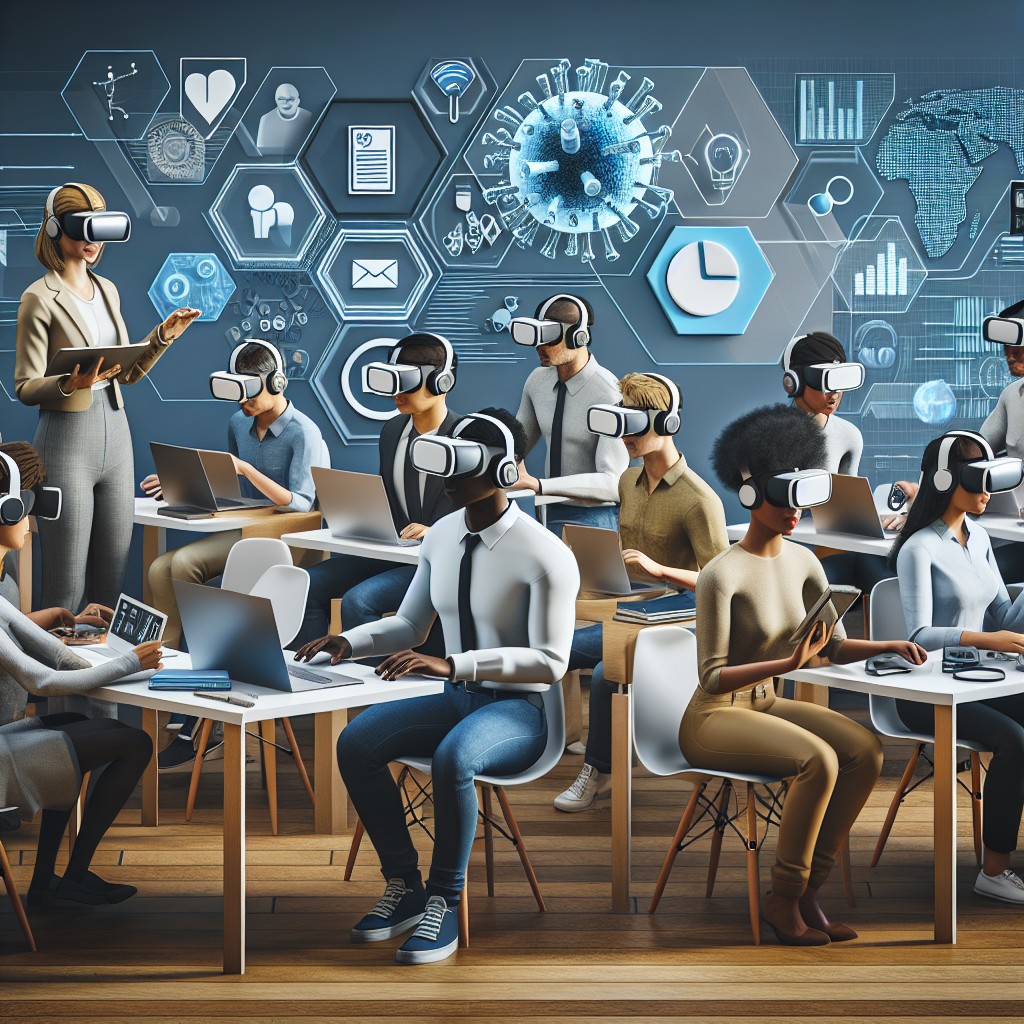
In today's rapidly evolving technological landscape, virtual reality (VR) and augmented reality (AR) stand out as revolutionary innovations that are fundamentally altering the way we approach learning and training. These cutting-edge technologies have opened up a world of possibilities in education, offering immersive experiences that were once unimaginable. By leveraging VR and AR, educators can create dynamic and interactive learning environments that captivate students' attention and enhance their understanding of complex concepts.
One of the key advantages of VR and AR in education is their ability to boost student engagement. By transporting learners to virtual worlds and presenting information in a visually stimulating way, these technologies make the learning process more exciting and interactive. Students are no longer passive recipients of information but active participants in their own education, which can lead to improved retention and comprehension of the material.
Moreover, VR and AR enable educators to provide hands-on training in a safe and controlled environment through realistic simulations. Whether it's practicing surgical procedures, conducting virtual science experiments, or exploring historical sites in a virtual field trip, these technologies offer a level of immersion that traditional teaching methods simply cannot match. This hands-on approach not only enhances students' practical skills but also instills a sense of confidence and competence in their abilities.
In conclusion, the potential of VR and AR in modern learning environments is indeed limitless. As these technologies continue to advance and become more accessible, they have the power to revolutionize the way we teach and learn, making education more engaging, effective, and inclusive for learners of all ages and backgrounds.
Exploring the Virtual Realm of Education
Imagine a classroom where students can embark on virtual field trips to historical landmarks, dissect a frog without the need for a physical specimen, or interact with three-dimensional models of complex biological structures. VR technology makes all this and more possible, offering immersive learning experiences that captivate students in ways traditional methods cannot.
With the ability to transport learners to different environments, VR fosters experiential learning, making abstract concepts tangible and enhancing retention. Students no longer passively consume information but actively engage with the material, driving curiosity and deepening understanding.
Embracing Augmented Reality for Interactive Learning
While VR immerses users in a completely digital environment, augmented reality overlays digital content onto the real world. This blending of virtual and physical worlds opens up new avenues for interactive learning experiences.
AR applications enable students to overlay digital annotations onto physical objects, bringing textbooks to life and creating interactive learning modules. For example, architectural students can visualize building designs in 3D, while chemistry students can explore molecular structures through AR-enhanced simulations.
Transforming Training with Technological Innovations
Beyond the realm of education, VR and AR are revolutionizing training across various industries, from healthcare to manufacturing. Simulations powered by these technologies enable professionals to practice complex procedures in a risk-free environment, improving skill acquisition and reducing training costs.
Realistic Simulations for Skill Enhancement
Imagine a surgeon refining their surgical techniques through VR simulations before stepping into an operating room, or a pilot undergoing AR training to familiarize themselves with cockpit controls. Such immersive simulations not only enhance procedural skills but also boost confidence and competence, ensuring that professionals are better prepared for real-world scenarios.
The Future of Learning and Training
As VR and AR technologies continue to evolve, their integration into educational and training settings holds the promise of personalized, adaptive learning experiences. By catering to individual learning styles and preferences, these technologies have the potential to revolutionize traditional pedagogical approaches.
With the growing accessibility of VR headsets and AR-enabled devices, the democratization of immersive learning experiences is within reach. As educators and trainers harness the power of these technologies, the future of education and training stands to be more engaging, effective, and inclusive than ever before.

In conclusion, the fusion of virtual and augmented reality with education and training represents a paradigm shift in how knowledge is acquired and skills are honed. By embracing these technological innovations, we pave the way for a future where learning transcends boundaries, unlocking the untapped potential of every individual.


Comments